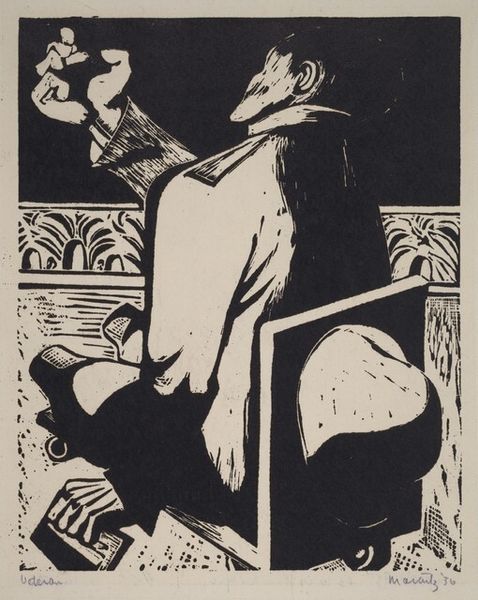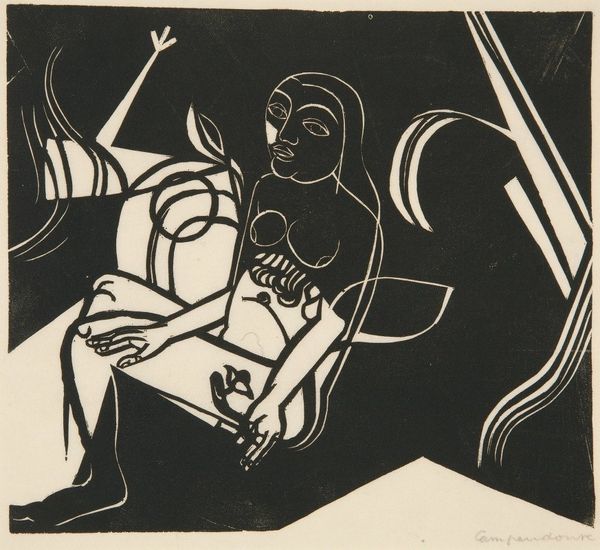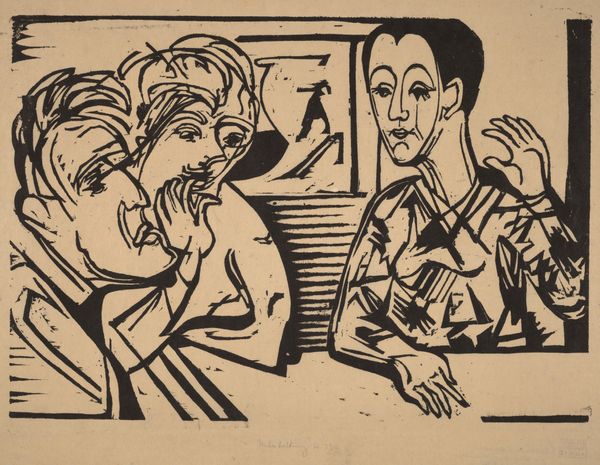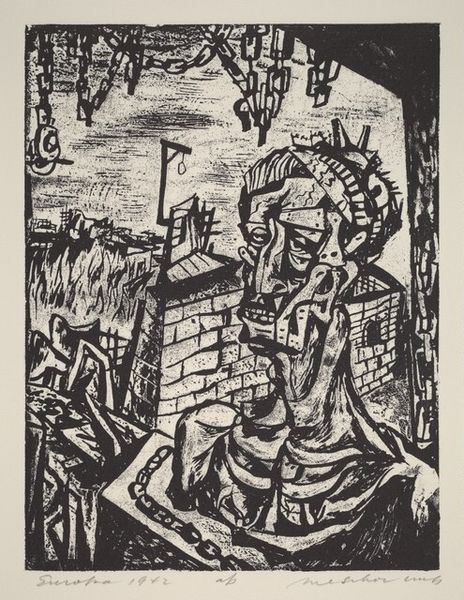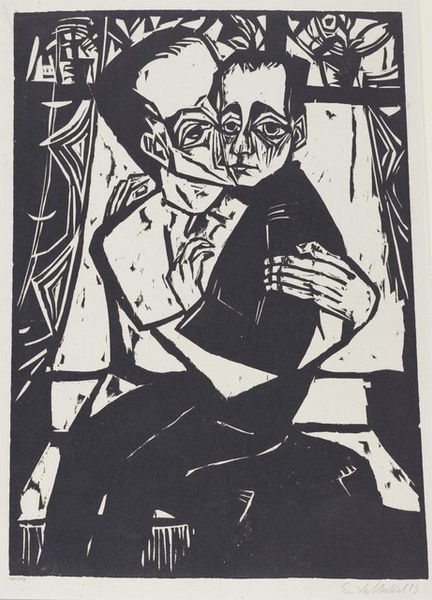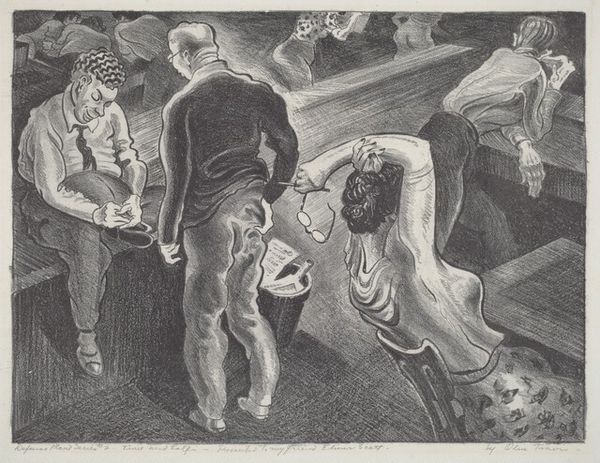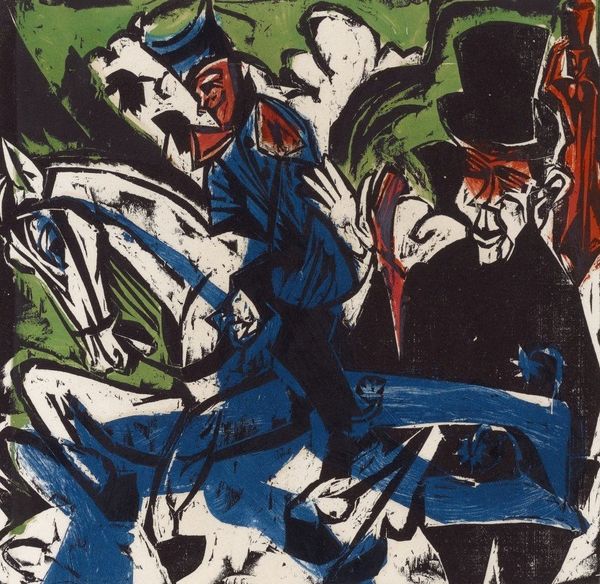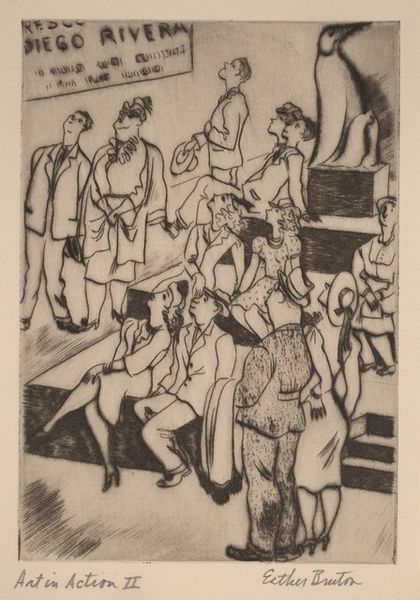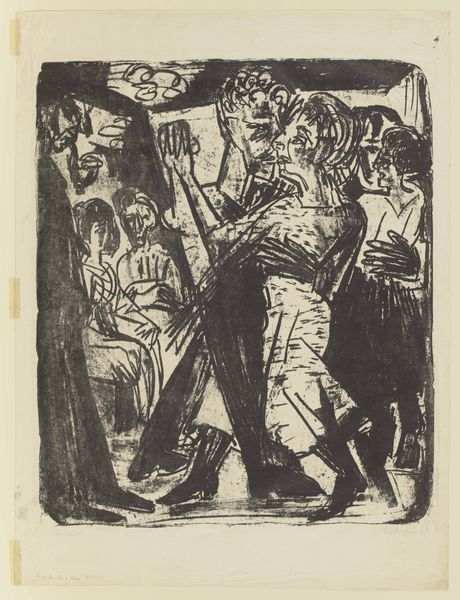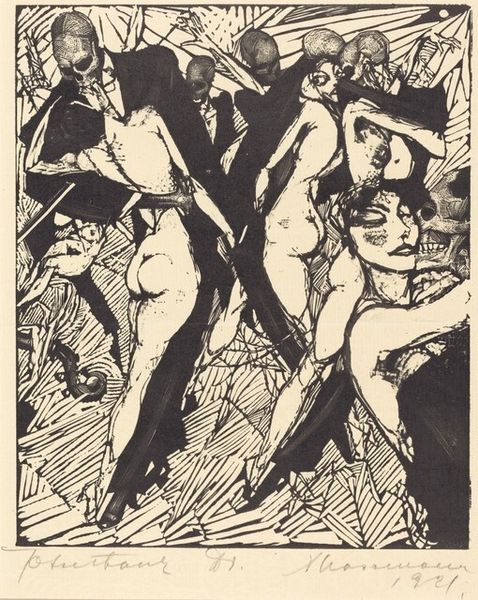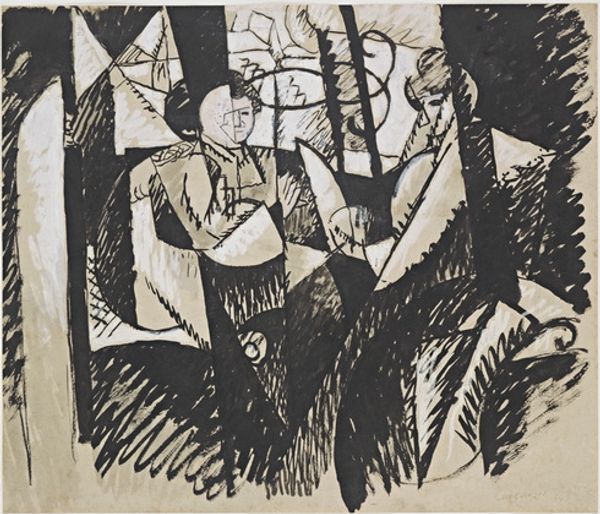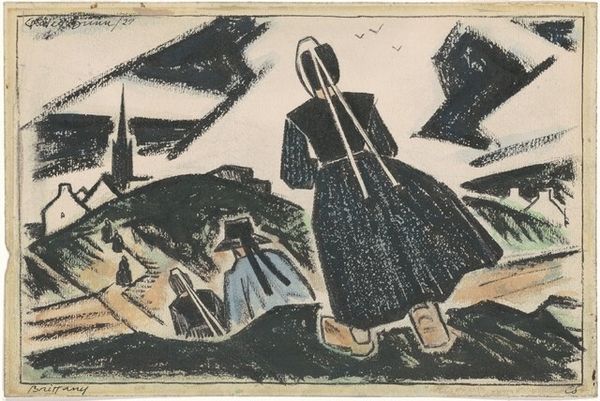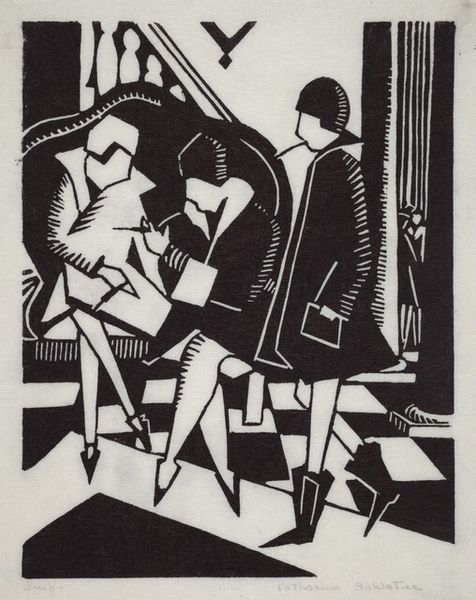
drawing
#
portrait
#
drawing
#
cubism
#
ink painting
#
geometric
#
cityscape
#
portrait drawing
#
portrait art
#
modernism
#
watercolor
Copyright: Public Domain: Artvee
Editor: This drawing, "Aux courses des Longchamps," from 1913, is by Juan Gris. It appears to be rendered in ink and watercolor. There's a distinctly modern feel, but something about the composition, with its geometric figures almost collaging together, makes it feel less accessible to me. How would you interpret this work? Curator: The setting of Longchamp racetrack is essential. Think about its social role in Paris at the time. It was a site of both aristocratic display and burgeoning middle-class aspirations. Gris, as a Spaniard in Paris deeply engaged in modernist circles, is keenly observing this spectacle. Editor: So, the work isn’t *just* about the individual people depicted, but about this specific cultural milieu? Curator: Precisely. And how does he capture it? Note the fractured perspective and simplification of form - it reflects a world rapidly changing due to industrialization and shifts in class structure. Consider also, that Cubism, in its dismantling of traditional representation, provided a way to reflect and critique the fragmentation of modern society. What about the windmills in the background? Editor: They seem… almost out of place, rustic against the fashionable figures in the foreground? Curator: Indeed. Those windmills subtly allude to a past clashing with the present, reflecting the changing urban landscape and social anxieties present in Parisian society at that moment. Gris isn't merely depicting; he's analyzing the performance of social identities within a shifting historical context. Editor: So, the art itself becomes a historical document of sorts, filtered through the artist's critical lens? That’s insightful. Curator: Exactly. Understanding the social and historical setting gives his geometric language much deeper resonance.
Comments
No comments
Be the first to comment and join the conversation on the ultimate creative platform.
